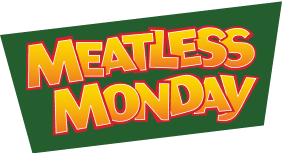Doctors, nutritionists, and wellness professionals generally agree that eating a combination of fruits, vegetables, whole grains, legumes, and lean proteins is the best way to maintain good health and reduce the risk of certain chronic diseases. Still, this simple dietary framework is regularly scrutinized, and dietary misinformation can spread quickly (e.g., fad diets). Conflicting information is abundant, and it can be hard to separate the truths from the myths, especially regarding plant-based foods.
Understanding the nutritional benefits and drawbacks of plant-based foods
Myth: “Plant-based foods don’t contain protein”
Nuts, seeds, beans, lentils, whole grains, tofu, and seitan are all sources of protein. The only caveat is that a greater quantity of these foods may have to be consumed to equal the amount of protein found in animal products. For example, it takes 1 cup of cooked beans to equal the amount of protein in a 3-ounce serving of meat. If you are worried about getting enough protein, adding a scoop of plant-based protein powder to a morning smoothie is easy.
Myth: “Plant-based eaters are anemic (iron-deficient)”
Plant-based ingredients like lentils, chickpeas, dark leafy greens, chia and hemp seeds, and dried fruits contain varying amounts of iron. Yes, iron found in meat (heme iron) is more easily absorbed by the body than iron from plant-based products (non-heme iron). However, research shows that eating foods containing vitamin C together with plant protein enhances iron’s bioavailability—for example, eating a bowl of beans with chopped red peppers or tofu with broccoli.
Myth: “Kids don’t like vegetables”
Children, adolescents, and teenagers will usually love vegetables if they’re prepared with thought and care. To introduce young people to new plant-based foods, try making dishes they recognize and enjoy, such as turning cauliflower into Buffalo nuggets or transforming eggplant, mushrooms, and grains into “meatballs.” Even something like a bean burrito with lettuce, rice, salsa, and guacamole is still a plant-based meal. Involving young people in the cooking process will also increase their likelihood to try unfamiliar foods.
Myth: “Vegan food = healthy food”
Not all plant-based foods are healthy. In fact, many packaged vegan or meat-free products contain high amounts of sugar, salt, and unhealthy oils and are highly processed. When an ingredient is highly processed, many of the beneficial nutrients are stripped away. French fries, potato chips, onion rings, cupcakes, and sugary cereals are all free of animal-based ingredients, but that fact alone doesn’t make these foods nutritious. Aim to eat primarily whole foods, like whole grains, legumes, fruits, vegetables, nuts, and seeds.
Myth: “There aren’t many plant-based options”
Almost any meal or dish can be made without meat or dairy. By using a combination of beans, nuts, seeds, grains, tofu, and vegetables, it’s possible to create everything from meatballs, Buffalo wings, and burgers to nuggets, chili, and ramen. Also, many classic comfort foods are plant-based or vegetarian, like falafel, hummus, bean burritos, curries, minestrone soup, etc. Plant-based eating isn’t limiting—it’s limitless!



